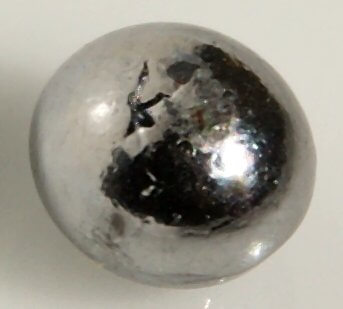
Rhenium
- Appearance : silvery-white, lustrous, dense metal
- Symbol : Re
- Atomic number : 75
- Atomic weight : 186.207
- Found in : Mainly occurs in molybdenum and beryllium minerals as an impurity, it is mined in the USA, Chile, Canada and Russia
- Uses : Rhenium is used as an additive to tungsten- and molybdenum-based alloys to give useful properties. These alloys are used for oven filaments and x-ray machines. It is also used as an electrical contact material as it resists wear and withstands arc corrosion.
With an estimated average concentration of 1 part per billion (ppb), rhenium is one of the rarest elements in the Earth’s crust. Rhenium has the third-highest melting point and second-highest boiling point of any stable element at 5903 K. Rhenium resembles manganese and technetium chemically and is mainly obtained as a by-product of the extraction and refinement of molybdenum and copper ores. Rhenium shows in its compounds a wide variety of oxidation states ranging from −1 to +7.
The toxicity of rhenium and its compounds is not well documented. Elemental rhenium has been described as ‘relatively inert’ in the body.
Rhenium is a rare, silvery-white, lustrous, dense metal.
It resists corrosion and oxidation but slowly tarnishes in moist air.
Of the elements, only carbon and tungsten have higher melting points and only iridium, osmium, and platinum are denser.
Rhenium is one of the five major refractory metals (metals with very high resistance to heat and wear).
The other refractory metals are tungsten, molybdenum, tantalum and niobium.
Rhenium compounds include oxides, halides and sulfides.
Nickel-based superalloys of rhenium are used in the combustion chambers, turbine blades, and exhaust nozzles of jet engines. These alloys contain up to 6% rhenium, making jet engine construction the largest single use for the element. The second-most important use is as a catalyst: rhenium is an excellent catalyst for hydrogenation and isomerization and is used for example in catalytic reforming of naphtha for use in gasoline (rheniforming process). Because of the low availability relative to demand, rhenium is expensive, with the price reaching an all-time high in 2008/2009 of US4,800 per pound). Due to increases in rhenium recycling and a drop in demand for rhenium in catalysts, the price of rhenium has dropped to US1,290 per pound) as of July 2018.